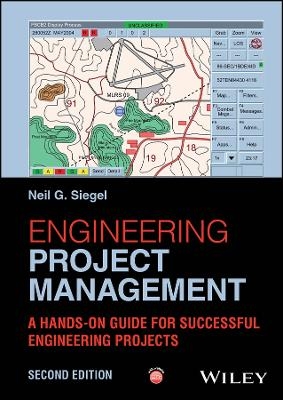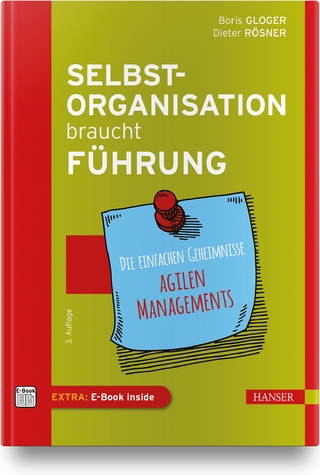
Engineering Project Management
John Wiley & Sons Inc (Verlag)
978-1-394-24298-6 (ISBN)
Engineering projects are vital for modern society and global human survival, but many engineering projects fail, in large part due to poor and/or ineffective management. These failures have led to a desire to identify those techniques and mindsets that can lead consistently to successful engineering projects.
The first edition of this book, Engineering Project Management, has served as the essential overview to engineering-based project management methods, tools, processes, and mind-sets. Offering a practical, step-by-step guide to applying project management techniques in engineering settings, it draws upon active learning approaches and the author’s extensive experience to create a thorough and cutting-edge guide. This second edition is now updated to reflect transformative recent developments in both technology and project management, and remains an indispensable tool for project managers and engineers alike.
Readers of this second edition of Engineering Project Management will also find:
Updated coverage of the social aspects of project management, along with other soft skills, throughout the volume
Detailed discussion of topics including project life-cycle, identification and management of stakeholders, cost estimation, schedule estimation, monitoring of your project, engineering economics, engineering ethics, and many more
A structure that aligns perfectly with a single-semester course, alternating lectures with facilitated lab sessions
Engineering Project Management is ideal for advanced undergraduates, graduate students, and instructors in courses in Engineering Project Management, as well as professional engineers and early career practitioners who need to brush up on their project management skills.
Neil G. Siegel, Ph.D. is the IBM Professor of Engineering Management in the department of Industrial and Systems Engineering at the University of Southern California's Viterbi School of Engineering. He was formerly the Vice-President and Chief Technology Officer of Northrup Grumman's Information Systems and Mission Systems sectors, and vice-president and general manager of the company's Tactical Systems Division. His honors and awards include election to the National Academy of Engineering, election of the National Academy of Inventors, the U.S. National Medal of Technology and Innovation, the IEEE Simon Ramo Medal, the TRW Chairman's Award for Innovation (3 times), and selection as a fellow of four professional societies, along with many other honors and awards. He holds nearly 50 issued patents worldwide.
About the Author xv
Acknowledgments xvi
About the Companion Website xviii
Introduction xix
1 The Role and the Challenge 1
1.1 Introduction 1
1.2 The Project 5
1.3 The Project Manager 11
1.4 Engineering Processes Can Help You 17
1.5 The Engineering Project Manager Mind-Set 18
1.6 Next 20
1.7 About Facilitated Lab Sessions and Practical Exercises 21
1.8 This Week’s Facilitated Lab Session 21
2 Performing Engineering on Projects (Initial Portion) 27
2.1 The Systems Method 27
2.2 Requirements 43
2.3 Design 52
2.4 Interaction of the Requirements and Design Processes with Project Management Processes 67
2.5 Your Role in All of This 67
2.6 Next 71
2.7 This Week’s Facilitated Lab Session 71
3 Performing Engineering on Projects (Concluding Portion) 73
3.1 The Remaining Stages of the Project Life-Cycle 73
3.2 Next 95
3.3 This Week’s Facilitated Lab Session 95
4 Understanding Your Users and Your Other Stakeholders 97
4.1 The Four Steps to Understanding Your Users and Your Other Stakeholders 98
4.2 Case Study About the Value of Using the Customer’s Coordinate System of Value: Role-Based Processing 108
4.3 Special Topic: Designing the User Experience 111
4.4 Summary: Understanding Your Users and Your Other Stakeholders 116
4.5 Next 116
4.6 This Week’s Facilitated Lab Session 116
5 How Do Engineering Projects Get Created? 119
5.1 Engineering Projects Are Created in Response to a Need, or a Vision 119
5.2 How to Win 122
5.3 A Case Study in Proposal Preparation 140
5.4 Your Role in All of This 144
5.5 Summary: How to Win 145
5.6 Next 146
5.7 This Week’s Facilitated Lab Session 146
6 Organizing and Planning 147
6.1 The Work-Breakdown Structure 147
6.2 The Statement of Work 154
6.3 The Organization Chart 157
6.4 The Project Plan 161
6.5 Your Role in All of This 166
6.6 Summary: Organizing and Planning 167
6.7 Next 167
6.8 This Week’s Facilitated Lab Session 167
7 Creating Credible Predictions for Schedule and Cost: The Activity Network 169
7.1 Setting the Stage 169
7.2 Estimating the Schedule for Your Project 172
7.3 Estimating the Cost of Your Project 180
7.4 Injecting Realism Into Your Estimates 182
7.5 Cost Versus Price 187
7.6 Your Role in All of This 188
7.7 The Intersection with Engineering 189
7.8 Next 189
7.9 This Week’s Facilitated Lab Session 190
8 Drawing Valid Conclusions from Numbers 191
8.1 In Engineering, We Must Make Measurements 191
8.2 The Data, the Analysis, and/or the Conclusions Are Often Wrong 192
8.3 What Engineering Project Managers Need to Measure 216
8.4 Implications for the Design and Management Processes 217
8.5 Beware of Trying to Predict or Forecast! 225
8.6 Your Role in All of This 226
8.7 Summary: Drawing Valid Conclusions From Numbers 226
8.8 Next 227
8.9 This Week’s Facilitated Lab Session 227
9 Risk and Opportunity Management 229
9.1 Things Can Go Wrong with Our Project: How Do We Cope? 229
9.2 The Steps of Risk Management 233
9.3 Two Special Types of Risks 244
9.4 Focus on Ranking the Risks by Their Potential Impact, Rather than by Their Likelihood 248
9.5 Lessons Learned From Risk Management 252
9.6 Your Role in All of This 253
9.7 Summary: Risk and Opportunity Management 253
9.8 Next 254
9.9 This Week’s Facilitated Lab Session 254
10 Monitoring the Progress of Your Project (Initial Portion) 255
10.1 Monitoring Progress Via Updated Predictions to Schedule and Cost 255
10.2 Making the Updated Predictions 258
10.3 Using the Updated Predictions 265
10.4 The ABCs of Finance, as They Apply to Engineering Project Management 270
10.5 Preview: Financial Measures About Which Your Company Will Care 281
10.6 Your Role in All of This 283
10.7 Summary: Monitoring the Progress of Your Project (Initial Portion) 283
10.8 Next 284
10.9 This Week’s Facilitated Lab Session 284
11 Monitoring the Progress of Your Project (Concluding Portion) 287
11.1 How the Manager of an Engineering Project Ought to Allocate His/Her Time 287
11.2 A Big Claim on Our Time: The Periodic Management Rhythm 288
11.3 The Steps of the Periodic Management Rhythm 292
11.4 The Social Benefits of the Periodic Management Rhythm 299
11.5 Your Role in All of This 300
11.6 Summary: Monitoring the Progress of Your Project (Concluding Portion) 301
11.7 Next 301
11.8 This Week’s Facilitated Lab Session 301
12 Four Special Topics 303
12.1 Starting Your Project 303
12.2 Systems and Projects with Large Amounts of Software 311
12.3 The Agile Software Development Methodology 317
12.4 Ending Your Project 320
12.5 Your Role in All of This 322
12.6 Next 322
12.7 This Week’s Facilitated Lab Session 322
13 The Social Aspects of Engineering Project Management 323
13.1 Dealing with People, Becoming a Leader 324
13.2 Alignment 324
13.3 The Sine Qua Non of Leadership 327
13.4 Motivating Your Team 328
13.5 Recognizing and Resolving Conflict 331
13.6 Siegel’s Mechanics of Project Management 338
13.7 Dealing with Special People 340
13.8 Your Career as an Engineer 344
13.9 Change on Your Project 347
13.10 Coping with Career Change 348
13.11 Getting Ahead 351
13.12 Three Special Topics 356
13.13 Summary for the Social Aspects of Engineering Project Management 359
13.14 Next 359
13.15 This Week’s Facilitated Lab Session 360
14 Achieving Quality 361
14.1 Defining the Term Quality 361
14.2 One Motivation for Quality: A Good Reputation 362
14.3 Quality Initiatives 363
14.4 Processes for Engineering and for Project Management 370
14.5 Procurement and Subcontracting 371
14.6 The Effects of Quality 372
14.7 The Bill of Materials 373
14.8 Financial Measures that Will Be of Interest to Your Company 374
14.9 Your Role in All of This 417
14.10 Next 417
14.11 This Week’s Facilitated Lab Session 417
15 Applying Our Ideas in the Real World, Ethics in Engineering 421
15.1 Applying Our Ideas in the Real World 421
15.2 Ethics in Engineering 423
15.3 Thank You 430
Index 431
| Erscheinungsdatum | 28.09.2024 |
|---|---|
| Verlagsort | New York |
| Sprache | englisch |
| Maße | 183 x 257 mm |
| Gewicht | 839 g |
| Themenwelt | Naturwissenschaften |
| Technik ► Maschinenbau | |
| Wirtschaft ► Betriebswirtschaft / Management ► Projektmanagement | |
| ISBN-10 | 1-394-24298-0 / 1394242980 |
| ISBN-13 | 978-1-394-24298-6 / 9781394242986 |
| Zustand | Neuware |
| Haben Sie eine Frage zum Produkt? |
aus dem Bereich


